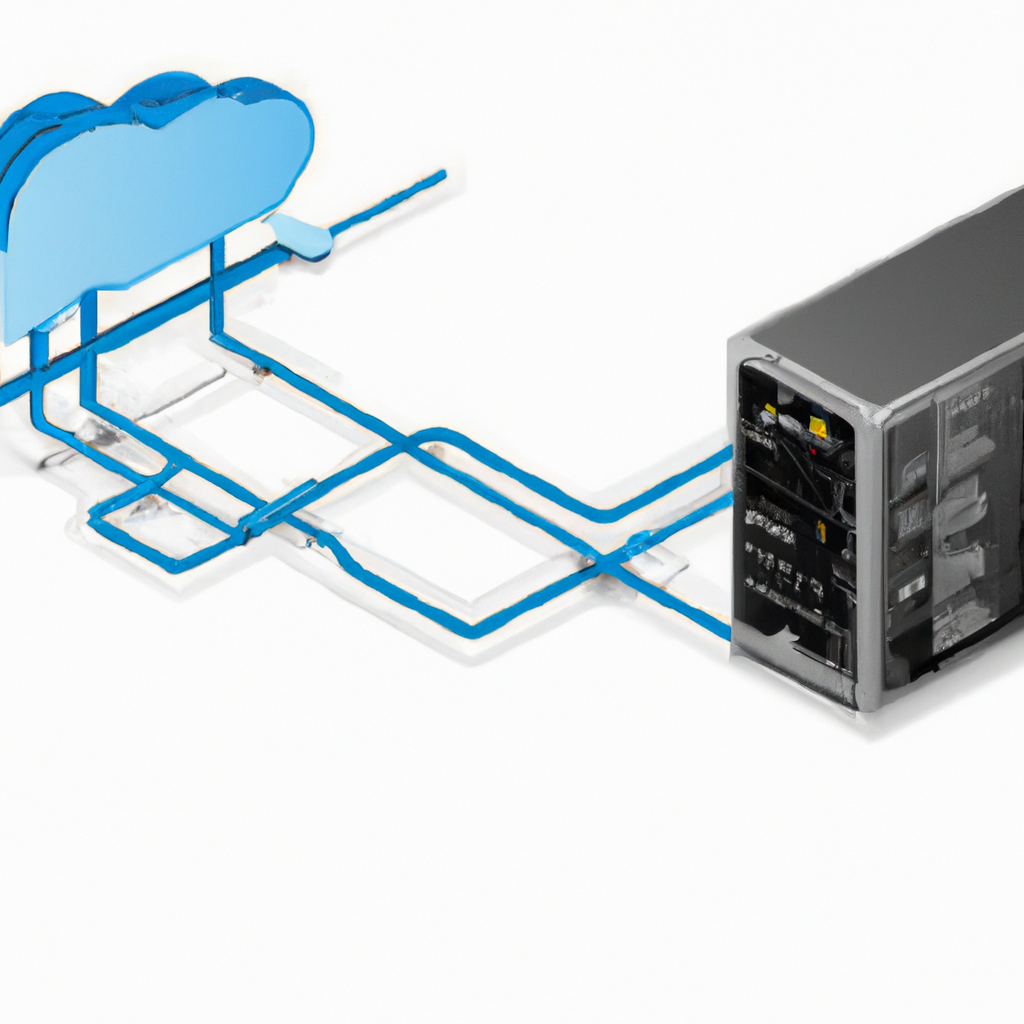Alright folks, let’s talk about GCP Filestore. Ever wondered what it is and how it can help you? Well, wonder no more! GCP Filestore is a handy tool that provides managed file storage in the Google Cloud Platform. It offers a simple and scalable solution for storing and managing your files, making it a dream come true for businesses and developers alike. So, let’s dive in and explore the wonders of GCP Filestore, shall we?

Overview
What is GCP Filestore?
GCP Filestore is a managed file storage service provided by Google Cloud Platform (GCP). It offers a fully-managed network-attached storage (NAS) solution that allows users to easily store and share files in the cloud. With Filestore, organizations can have a reliable and scalable storage solution without the need for managing complex infrastructure.
Features of GCP Filestore
GCP Filestore comes with several key features that make it a powerful and convenient storage solution. Firstly, it offers high-performance and low-latency file sharing, allowing multiple instances to access the same file system simultaneously. This enables collaboration and data sharing among users and applications.
Filestore also provides the capability to dynamically scale storage capacity to meet the changing needs of an organization. Administrators can easily increase or decrease the size of file systems without any disruption to ongoing operations. This scalability ensures that businesses can seamlessly adapt to their storage requirements without unnecessary downtime or additional costs.
Another important feature of GCP Filestore is its data durability and redundancy. Google takes care of replicating data across multiple availability zones to ensure that files are securely stored and protected against failures. This built-in redundancy guarantees high availability and minimizes the risk of data loss.
Use cases for GCP Filestore
GCP Filestore is well-suited for a variety of use cases that require shared file storage in the cloud. One common use case is for content management systems (CMS) or web applications that need to store and serve large volumes of media files, such as images, videos, or documents. Filestore’s high-performance file sharing allows these applications to efficiently access and deliver files to users.
Another use case is for development and testing environments. Filestore can serve as a centralized storage location for source code repositories, build artifacts, and development resources. Developers can easily collaborate and share files, ensuring smooth software development workflows.
Filestore is also useful for data analytics and machine learning workloads. By providing a shared file system that can be accessed by multiple compute instances, organizations can store and process large data sets efficiently. This enables data scientists and machine learning engineers to work on projects that require shared storage, while taking advantage of the scalability and reliability of GCP.
Overall, GCP Filestore simplifies file storage and sharing in the cloud, making it a valuable tool for a wide range of use cases.
Creating and Managing File Systems
Creating a Filestore instance
Creating a Filestore instance in GCP is a straightforward process. In the GCP Console, users can navigate to the Filestore section and click on the “Create Instance” button. They will be prompted to provide a name for the instance, choose the project and location, and specify the desired configuration, such as the storage capacity and performance mode.
Once the instance is created, users can access it using the standard Network File System (NFS) protocols, making it compatible with a wide range of applications and platforms. The instance will have a unique hostname that can be used to mount the file system from virtual machines or any other NFS client.
Configuring and managing file systems
After creating a Filestore instance, administrators can configure file systems within that instance. They can specify the size of each file system, choose the performance mode (either standard or premium), and set the maximum number of connections allowed.
File systems can also be easily managed through the GCP Console or command-line tools. Administrators have the ability to resize file systems, delete them when no longer needed, or create snapshots for backup purposes. These management capabilities provide flexibility and control over storage resources.

Importing and Exporting Data
Importing data into Filestore
GCP Filestore provides several methods for importing data into file systems. One option is to use the built-in rsync utility, which allows users to efficiently sync files from an on-premises file server to Filestore. Additionally, the Google Cloud Storage Transfer Service can be utilized to import data from Cloud Storage buckets.
For large data sets, users can take advantage of the Filestore Offline Media Import feature. This involves shipping physical media, such as hard drives, to Google for data transfer. Google will then upload the data to the specified Filestore instance, ensuring a fast and secure import process.
Exporting data from Filestore
Exporting data from Filestore can be done in a similar manner to importing. The rsync utility can be used to sync files from Filestore to an on-premises server, allowing for easy data retrieval. Cloud Storage Transfer Service can also be employed to export data from Filestore to Cloud Storage buckets.
It is worth noting that in order to export data, the user performing the export must have read access to the file system and must be authorized to access the destination storage location. This ensures that data is securely transferred and accessible only to authorized individuals or systems.
Filestore Backups and Snapshots
Working with backups
GCP Filestore provides a built-in backup feature that allows users to create automatic backups of their file systems. Backups are performed at regular intervals and stored separately from the file systems, ensuring data durability and recovery options in the event of accidental deletions or data corruption.
Users have the ability to define the frequency and retention policy for backups, allowing them to tailor the backup strategy to their specific needs. They can choose to retain backups for a set period of time or indefinitely, depending on their data retention requirements.
Creating and managing snapshots
In addition to backups, Filestore supports the creation and management of snapshots. Snapshots are point-in-time copies of file systems that can be used for various purposes, such as archiving, disaster recovery, or creating consistent copies for testing and development.
Users can create snapshots manually or schedule them to be created at regular intervals. Snapshots are stored separately and can be easily restored to create new file systems or recover specific files or directories. This flexibility provides users with additional options for data protection and recovery.

Filestore Security and Access Control
Securing Filestore data
GCP Filestore incorporates several security measures to protect data at rest and in transit. All data stored in Filestore is encrypted at rest by default, ensuring that files are stored securely on disk. Google manages the encryption keys, minimizing the complexity and overhead for users.
To protect data in transit, Filestore supports Transport Layer Security (TLS) encryption. This ensures that data transferred between client systems and the Filestore instance is encrypted and cannot be intercepted or tampered with.
Implementing access control
Filestore allows users to implement fine-grained access control to ensure that data is accessible only by authorized individuals or systems. Access control can be enforced using Identity and Access Management (IAM) roles and permissions. Administrators can assign specific roles to users or groups, granting or revoking access to file systems as needed.
Furthermore, Filestore supports integration with Virtual Private Cloud (VPC) networks, allowing users to confine file system access to specific networks or subnets. This helps enforce network-level security and prevent unauthorized access from external sources.
Overall, the security and access control features of Filestore help organizations protect their data and ensure that it is accessible only by authorized users.
Monitoring, Logging, and Troubleshooting Filestore
Monitoring Filestore usage and performance
GCP Filestore provides monitoring capabilities to track usage metrics and assess the performance of file systems. Users can view important metrics such as throughput, IOPS, latency, and network usage through the GCP Console or by utilizing the Cloud Monitoring service.
This monitoring data can be valuable for capacity planning, identifying performance bottlenecks, and troubleshooting issues. Visualizing usage patterns and analyzing performance metrics can help optimize the usage of Filestore and ensure it meets the performance requirements of applications and users.
Logging and troubleshooting Filestore issues
In addition to monitoring, Filestore also integrates with Google Cloud’s logging and troubleshooting tools. Logs from Filestore instances can be streamed to Cloud Logging, making it easy to analyze and troubleshoot issues. These logs provide valuable insights into the health and status of file systems, helping administrators identify and resolve potential problems.
Filestore also supports integration with Google Cloud’s error reporting and debugging tools, enabling a streamlined troubleshooting experience. By leveraging these tools, organizations can quickly diagnose and resolve any issues that may arise with their Filestore deployments.

Best Practices for Using GCP Filestore
Optimizing performance
To optimize the performance of GCP Filestore, it is recommended to select the appropriate performance mode based on the workload requirements. The standard performance mode is suitable for most use cases, providing a good balance between cost and performance. However, if higher throughput and lower latency are necessary, the premium performance mode should be chosen.
Additionally, it is important to consider the sizing of file systems and adjust capacity as needed. Planning for future growth and monitoring usage patterns can help avoid performance bottlenecks and ensure optimal performance.
Managing costs
When managing costs for GCP Filestore, it is important to carefully consider the size and number of file systems needed. Unused or oversized file systems can result in unnecessary costs. By regularly monitoring and adjusting the capacity of file systems based on actual usage, organizations can optimize costs and avoid overprovisioning.
It may also be beneficial to leverage file system backups and snapshots judiciously. While backups provide data protection and recovery options, storing excessive backups or snapshots can contribute to increased storage costs. Defining a retention policy and regularly reviewing backup and snapshot usage can help manage costs effectively.
Ensuring data durability
To ensure data durability with GCP Filestore, it is recommended to take advantage of the built-in backup and snapshot features. Regularly creating backups and snapshots provides additional layers of data protection and allows for point-in-time recovery.
Furthermore, it is important to enable encryption at rest for file systems. This ensures that data remains secure even if accessed or copied outside of the Filestore environment. By combining encryption at rest with backups and snapshots, organizations can minimize the risk of data loss and ensure the durability of their data.
Alternatives to GCP Filestore
Comparison with other GCP storage solutions
While GCP Filestore offers a powerful managed file storage solution, there are alternative storage options available within the Google Cloud ecosystem.
One notable alternative is Google Cloud Storage. Unlike GCP Filestore, which provides file-level storage, Cloud Storage is an object storage solution. It is a highly scalable, durable, and cost-effective storage service that can be used for various use cases, such as storing static website files, unstructured data, or backup archives. Cloud Storage is ideal for applications that do not require shared file access or specific file system semantics.
Another alternative is Google Cloud Persistent Disk. It provides block-level storage that can be attached to virtual machine instances. Persistent Disk offers the flexibility to choose the size and performance characteristics of the storage volumes, making it suitable for applications that require high-performance, low-latency storage for individual virtual machine instances.
Considerations for choosing an alternative
When considering alternatives to GCP Filestore, it is important to evaluate the specific requirements of the use case. Factors such as the need for shared file access, the size and performance needs of the storage, and the type of data being stored should be taken into account.
Additionally, cost considerations play a significant role in selecting the right storage solution. Organizations should analyze the pricing models and associated costs for each option, considering factors such as storage capacity, data transfer, and backups.
In summary, while GCP Filestore is a powerful managed file storage service, it is important to weigh the pros and cons of alternative solutions to ensure the best fit for the specific use case.

Conclusion
GCP Filestore offers organizations a managed and scalable file storage solution within the Google Cloud Platform ecosystem. With features such as high-performance file sharing, data durability, and easy management, Filestore simplifies the storage and sharing of files in the cloud.
By understanding the process of creating and managing file systems, importing and exporting data, implementing security measures, and leveraging monitoring and troubleshooting tools, organizations can effectively utilize GCP Filestore to meet their storage needs.
Furthermore, by following best practices such as optimizing performance, managing costs, and ensuring data durability, users can maximize the benefits of GCP Filestore. Additionally, exploring alternative storage options, such as Google Cloud Storage and Google Cloud Persistent Disk, can help organizations make informed decisions based on their specific requirements.
In conclusion, GCP Filestore is a powerful and versatile storage solution that provides organizations with the flexibility, scalability, and security necessary to store and share files in the cloud effectively.
